How Many Brain Cells Does a Baby Have
Wikipedia list article


Brief comparisons of number of whole brain neurons (top) and cerebral cortex neurons (bottom) among six mammals.
The following are two lists of animals ordered by the size of their nervous system. The first list shows number of neurons in their entire nervous system, indicating their overall neural complexity. The second list shows the number of neurons in the structure that has been found to be representative of animal intelligence.[1] The human brain contains 86 billion neurons, with 16 billion neurons in the cerebral cortex.[2] [1]
Overview [edit]
Neurons are the cells that transmit information in an animal's nervous system so that it can sense stimuli from its environment and behave accordingly. Not all animals have neurons; Trichoplax and sponges lack nerve cells altogether.
Neurons may be packed to form structures such as the brain of vertebrates or the neural ganglions of insects.
The number of neurons and their relative abundance in different parts of the brain is a determinant of neural function and, consequently, of behavior.
Whole nervous system [edit]
All numbers for neurons (except Caenorhabditis and Ciona), and all numbers for synapses (except Ciona) are estimations.
| Name | Neurons in the brain & whole nervous system | Synapses | Details | Image | Source |
|---|---|---|---|---|---|
| Sponge | 0 | | [3] | ||
| Trichoplax | 0 | Despite no nervous system, it exhibits coordinated feeding and response behaviors.[4] | | [5] | |
| Asplanchna brightwellii (rotifer) | about 200 | Brain only | | [6] | |
| Tardigrade | about 200 | Brain only | | [7] | |
| Ciona intestinalis larva (sea squirt) | 231 | 8,617 (central nervous system only) | | [8] [9] | |
| Caenorhabditis elegans (roundworm) | 302 | ~7,500 | is the only organism to have its whole connectome (neuronal "wiring diagram") completed.[10] [11] [12] | | [13] |
| Jellyfish | 5,600 | Hydra vulgaris (H. attenuate) | | [14] | |
| Megaphragma mymaripenne | 7,400 | | [15] | ||
| Box jellyfish | 8,700–17,500 | adult Tripedalia cystophora (8 mm diameter) – does not include 1000 neurons in each of the four rhopalia | | [16] | |
| Medicinal leech | 10,000 | | [17] | ||
| Pond snail | 11,000 | | [18] | ||
| Sea slug | 18,000 | | [19] | ||
| Amphioxus | 20,000 | central nervous system only | | [20] [21] | |
| Larval zebrafish | 100,000 | | [22] | ||
| Lobster | 100,000 | | [23] | ||
| Fruit fly | 100,000 | < 10,000,000 [ citation needed ] | | [24] | |
| Wandering spider | 100,000 | | [25] | ||
| Calliopsis (bee) | 234,000 | | [26] | ||
| Ant | 250,000 | Varies per species | | [27] | |
| Perdita (genus) | 275,000 | [26] | |||
| Melissodes | 495,000 | [26] | |||
| Bombus impatiens | 557,000 | | [26] | ||
| Western honey bee | 613,000 | | [26] | ||
| Honey bee | 960,000 | ~1×10 | | [28] | |
| Cockroach | 1,000,000 | | [29] | ||
| Coconut crab | >1,000,000 | c. 1,000,000 interneurons are dedicated to analysing olfactory input alone. | [30] | ||
| California carpenter bee | 1,180,000 | | [26] | ||
| Anolis cristatellus | 4,270,000 | | [31] | ||
| Guppy | 4,300,000 | | [32] | ||
| Ocelot gecko | 4,420,000 | | [33] | ||
| Anolis evermanni | 4,920,000 | [31] | |||
| Adult zebrafish | ~10,000,000 | cells (neurons + other) | | [34] | |
| Frog | 16,000,000 | | [35] | ||
| Naked mole-rat | 26,880,000 | | [36] | ||
| Little free-tailed bat | 35,000,000 | | [37] | ||
| Smoky shrew | 36,000,000 | | [38] | ||
| Short-tailed shrew | 52,000,000 | | [38] | ||
| Common bent-wing bat | 56,000,000 | [37] | |||
| African sheath-tailed bat | 59,000,000 | [37] | |||
| Hottentot golden mole | 65,000,000 | | [39] | ||
| Woermann's bat | 66,000,000 | [37] | |||
| Zenker's fruit bat | 66,000,000 | [37] | |||
| Commerson's roundleaf bat | 67,000,000 | | [37] | ||
| Rufous trident bat | 70,000,000 | [37] | |||
| House mouse | 71,000,000 | ~1×10 | | [40] | |
| Nile crocodile | 80,500,000 | | [41] | ||
| Heart-nosed bat | 81,000,000 | | [37] | ||
| Golden hamster | 90,000,000 | | [40] | ||
| Short-palated fruit bat | 99,000,000 | [37] | |||
| Ansell's mole-rat | 103,000,000 | | [42] | ||
| Mashona mole-rat | 113,000,000 | [42] | |||
| Hairy-tailed mole | 124,000,000 | | [39] | ||
| Eastern rock elephant shrew | 129,000,000 | | [39] | ||
| Star-nosed mole | 131,000,000 | | [38] | ||
| Zebra finch | 131,000,000 | Brain only | | [43] | |
| Silvery mole-rat | 148,000,000 | | [42] | ||
| Four-toed elephant shrew | 157,000,000 | | [39] | ||
| Eurasian blackcap | 157,000,000 | | [43] | ||
| Wahlberg's epauletted fruit bat | 162,000,000 | | [37] | ||
| Goldcrest | 164,000,000 | | [43] | ||
| Cape mole-rat | 170,000,000 | | [42] | ||
| Egyptian fruit bat | 172,000,000 | | [37] | ||
| Mechow's mole-rat | 174,000,000 | | [42] | ||
| Damaraland mole-rat | 178,000,000 | | [42] | ||
| Franquet's epauletted fruit bat | 186,000,000 | [37] | |||
| Brown rat | 200,000,000 | ~4.48×10 | | [44] | |
| Guyenne spiny rat | 202,000,000 | [39] | |||
| Eastern mole | 204,000,000 | | [38] | ||
| Red junglefowl | 221,000,000 | | [43] | ||
| Great tit | 226,000,000 | | [43] | ||
| Green-rumped parrotlet | 227,000,000 | | [43] | ||
| Guinea pig | 240,000,000 | | [40] | ||
| Gray mouse lemur | 254,710,000 | | [45] | ||
| Common treeshrew | 261,000,000 | | [46] | ||
| Hammer-headed bat | 275,000,000 | | [37] | ||
| Pigeon | 310,000,000 | Brain only | | [43] | |
| Budgerigar | 322,000,000 | | [43] | ||
| Cape dune mole-rat | 361,000,000 | | [42] | ||
| Common blackbird | 379,000,000 | | [43] | ||
| Ferret | 404,000,000 | | [47] | ||
| Cockatiel | 453,000,000 | | [43] | ||
| Gray squirrel | 453,660,000 | | [36] | ||
| Banded mongoose | 454,000,000 | | [47] | ||
| Prairie dog | 473,940,000 | | [36] | ||
| Common starling | 483,000,000 | | [43] | ||
| European rabbit | 494,200,000 | | [36] | ||
| Octopus | 500,000,000 | | [48] | ||
| Western tree hyrax | 505,000,000 | | [39] | ||
| Common marmoset | 636,000,000 | | [46] | ||
| Eastern rosella | 642,000,000 | | [43] | ||
| Barn owl | 690,000,000 | | [43] | ||
| Monk parakeet | 697,000,000 | | [43] | ||
| Azure-winged magpie | 741,000,000 | | [43] | ||
| Rock hyrax | 756,000,000 | | [39] | ||
| Cat | 760,000,000 | ~1×10 | | [49] | |
| Black-rumped agouti | 857,000,000 | | [40] | ||
| Magpie | 897,000,000 | | [43] | ||
| Common hill myna | 906,000,000 | | [43] | ||
| Northern greater galago | 936,000,000 | [46] | |||
| Western jackdaw | 968,000,000 | | [43] | ||
| Eurasian jay | 1.085×10 | | [43] | ||
| Alexandrine parakeet | 1.096×10 | | [43] | ||
| Raccoon dog | 1.16×10 | | [50] | ||
| Tanimbar corella | 1.161×10 | | [43] | ||
| Emu | 1.335×10 | | [43] | ||
| Three-striped night monkey | 1.468×10 | [46] | |||
| Rook | 1.509×10 | | [43] | ||
| Grey parrot | 1.566×10 | | [43] | ||
| Capybara | 1.6×10 | | [40] | ||
| Jackal | 1.73×10 | | [50] | ||
| Fox | 2.11×10 | | [50] | ||
| Sulphur-crested cockatoo | 2.122×10 | | [43] | ||
| Raccoon | 2.148×10 | | [47] | ||
| Kea | 2.149×10 | | [43] | ||
| Raven | 2.171×10 | Brain only | | [43] | |
| Domestic pig | 2.22×10 | | [51] | ||
| Dog | 2.253×10 | | [47] | ||
| Chihuahua (dog) | 2.51×10 | | [50] | ||
| Dog (Chow Chow) | 2.61×10 | | [50] | ||
| Dog (Yorkshire Terrier) | 2.64×10 | | [50] | ||
| Springbok | 2.72×10 | | [51] | ||
| Dog (West Highland White Terrier) | 2.83×10 | | [50] | ||
| Blesbok | 3.06×10 | | [51] | ||
| Blue-and-yellow macaw | 3.136×10 | Brain only | | [43] | |
| Common squirrel monkey | 3.246×10 | | [46] | ||
| Crab-eating macaque | 3.44×10 | | [45] | ||
| Dog (German Shepherd) | 3.53×10 | | [50] | ||
| Tufted capuchin | 3.691×10 | | [46] | ||
| Bonnet macaque | 3.78×10 | | [45] | ||
| Striped hyena | 3.885×10 | | [47] | ||
| Dog (Komondor) | 3.99×10 | [50] | |||
| Dog (Transylvanian Hound) | 4.39×10 | | [50] | ||
| Lion | 4.667×10 | | [47] | ||
| Greater kudu | 4.91×10 | | [51] | ||
| Rhesus macaque | 6.376×10 | | [46] | ||
| Brown bear | 9.586×10 | | [47] | ||
| Giraffe | 1.075×10 | | [51] | ||
| Yellow baboon | 1.095×10 | | [45] | ||
| Chimpanzee | 2.8×10 | | [52] | ||
| Orangutan | 3.26×10 | | [53] | ||
| Gorilla | 3.34×10 | | [53] | ||
| Human | 8.6×10 | ~1.5×10 | Neurons for average adult | | [54] [55] [56] |
| African elephant | 2.57×10 | | [57] [58] |
List of animal species by forebrain (cerebrum or pallium) neuron number [edit]
The question of what physical characteristic of an animal makes an animal intelligent has varied over the centuries. One early speculation was brain size (or weight, which provides the same ordering.) A second proposal was brain-to-body-mass ratio, and a third was encephalization quotient, sometimes referred to as EQ. The current best predictor is number of neurons in the forebrain, based on Herculano-Houzel's improved neuron counts.[1] It accounts most accurately for variations in dependence on the cerebellum. The elephant depends on its exceptionally large cerebellum, while birds make do with a much smaller one.
Differing methods have been used to count neurons and these may differ in degree of reliability. These are the optical fractionator, an application of stereology and the isotropic fractionator, a recent methodological innovation. Most numbers in the list are the result of studies using the newer isotropic fractionator.[1] [36] [26] [40] [41] [43] [44] [45] [46] [51] [52] [53] [54] [55] [57] [59] A variation of the optical fractionator was responsible for the previous total human brain neuron count of 100,000,000,000 neurons, which has been revised down to 86,000,000,000 by the use of the isotropic fractionator. This is in part why it may be considered to be less reliable. Finally, some numbers are the result of estimations based on correlations observed between number of cortical neurons and brain mass within closely related taxa.
The following table gives information on the number of neurons estimated to be in the sensory-associative structure (such as the pallium).
| Common name | Average number of sensory-associative structure neurons [a] | Intraspecific variation[b] | Method[c] | Sensory-associative structure | Binomial nomenclature | Image | Source |
|---|---|---|---|---|---|---|---|
| Common fruit fly | 2,500* | Optical fractionator | Corpora pedunculata | Drosophila melanogaster | | [60] | |
| House cricket | 50,000* | Optical fractionator | Corpora pedunculata | Acheta domesticus | | [60] | |
| Honey bee | 170,000* | Optical fractionator | Corpora pedunculata | Genus: Apis | | [60] | |
| Common cockroach | 200,000* | Optical fractionator | Corpora pedunculata | Genus: Periplaneta | | [60] | |
| African sheath-tailed bat | 5,000,000 | Isotropic fractionator | Pallium (cortex) | Coleura afra | [37] | ||
| Rufous trident bat | 6,000,000 | Isotropic fractionator | Pallium (cortex) | Triaenops persicus | [37] | ||
| Naked mole-rat | 6,000,000 | ± 1,065,587[39] | Isotropic fractionator | Pallium (cortex) | Heterocephalus glaber | | [36] |
| Little free-tailed bat | 6,000,000 | Isotropic fractionator | Pallium (cortex) | Chaerephon pumilus | | [37] | |
| Common bent-wing bat | 6,000,000 | Isotropic fractionator | Pallium (cortex) | Miniopterus schreibersii | [37] | ||
| Commerson's roundleaf bat | 8,000,000 | Isotropic fractionator | Pallium (cortex) | Hipposideros commersoni | | [37] | |
| Heart-nosed bat | 10,000,000 | Isotropic fractionator | Pallium (cortex) | Cardioderma cor | | [37] | |
| Ansell's mole-rat | 10,000,000 | Isotropic fractionator | Pallium (cortex) | Fukomys anselli | | [42] | |
| Smoky shrew | 10,000,000 | ± 352,000[39] | Isotropic fractionator | Pallium (cortex) | Sorex fumeus | | [39] |
| Short-palated fruit bat | 10,000,000 | Isotropic fractionator | Pallium (cortex) | Casinycteris argynnis | [37] | ||
| Mashona mole-rat | 12,000,000 | Isotropic fractionator | Pallium (cortex) | Fukomys darlingi | [42] | ||
| Woermann's bat | 12,000,000 | Isotropic fractionator | Pallium (cortex) | Megaloglossus woermanni | [37] | ||
| Northern short-tailed shrew | 12,000,000 | ± 1,569,000[39] | Isotropic fractionator | Pallium (cortex) | Blarina brevicauda | | [39] |
| Zenker's fruit bat | 13,000,000 | Isotropic fractionator | Pallium (cortex) | Scotonycteris zenkeri | [37] | ||
| House mouse | 14,000,000 | ± 2,242,257[39] | Isotropic fractionator | Pallium (cortex) | Mus musculus | | [39] |
| Hairy-tailed mole | 16,000,000 | ± 2,611,000[39] | Isotropic fractionator | Pallium (cortex) | Parascalops breweri | | [39] |
| Star-nosed mole | 17,000,000 | ± 3,105,000[39] | Isotropic fractionator | Pallium (cortex) | Condylura cristata | | [39] |
| Golden hamster | 17,000,000 | ± 3,619,934[39] | Isotropic fractionator | Pallium (cortex) | Mesocricetus auratus | | [39] |
| Damaraland mole-rat | 21,000,000 | Isotropic fractionator | Pallium (cortex) | Fukomys damarensis | | [42] | |
| Hottentot golden mole | 22,000,000 | ± 2,154,000[39] | Isotropic fractionator | Pallium (cortex) | Amblysomus hottentotus | | [39] |
| Gray mouse lemur | 22,310,000 | Isotropic fractionator | Pallium (cortex) | Microcebus murinus | | [45] | |
| Mechow's mole-rat | 23,000,000 | Isotropic fractionator | Pallium (cortex) | Fukomys mechowii | | [42] | |
| Franquet's epauletted fruit bat | 23,000,000 | Isotropic fractionator | Pallium (cortex) | Epomops franqueti | [37] | ||
| Hammer-headed bat | 24,000,000 | Isotropic fractionator | Pallium (cortex) | Hypsignathus mostrosus | [37] | ||
| Hedgehog | 24,000,000^ | Estimated | Pallium (cortex) | Subfamily Erinaceinae, various species | | [61] | |
| Silvery mole-rat | 25,000,000 | Isotropic fractionator | Pallium (cortex) | Heliophobius argenteocinereus | | [42] | |
| Wahlberg's epauletted fruit bat | 26,000,000 | Isotropic fractionator | Pallium (cortex) | Epomophorus wahlbergi | | [37] | |
| Cape mole-rat | 26,000,000 | Isotropic fractionator | Pallium (cortex) | Georychus capensis | | [42] | |
| Guyenne spiny rat | 26,000,000 | ± 2,155,723[39] | Isotropic fractionator | Pallium (cortex) | Proechimys cayennensis | [39] | |
| Eastern rock elephant shrew | 26,000,000 | ± 4,020,000[39] | Isotropic fractionator | Pallium (cortex) | Elephantulus myurus | | [39] |
| Eastern mole | 27,000,000 | ± 5,113,000[39] | Isotropic fractionator | Pallium (cortex) | Scalopus aquaticus | | [39] |
| Opossum | 27,000,000^ | Estimated | Pallium (cortex) | Didelphis virginiana | | [61] | |
| Egyptian fruit bat | 29,000,000 | Isotropic fractionator | Pallium (cortex) | Rousettus aegyptiacus | | [37] | |
| Brown Rat | 31,000,000 | + 3,034,654[39] | Isotropic fractionator | Pallium (cortex) | Rattus norvegicus | | [39] |
| Four-toed elephant shrew | 34,000,000 | ± 5,840,000[39] | Isotropic fractionator | Pallium (cortex) | Petrodromus tetradactylus | | [39] |
| Ferret | 38,950,000 | Isotropic fractionator | Pallium (cortex) | Mustela putorius furo | | [47] | |
| Cape dune mole-rat | 43,000,000 | Isotropic fractionator | Pallium (cortex) | Bathyergus suillus | | [42] | |
| Guinea pig | 43,510,000 | ± 3,169,924[39] | Isotropic fractionator | Pallium (cortex) | Cavia porcellus | | [36] |
| Eurasian blackcap | 52,000,000 | Isotropic fractionator | Pallium (DVR) | Sylvia atricapilla | | [43] | |
| Prairie dog | 53,770,000 | ± 6,044,322[39] | Isotropic fractionator | Pallium (cortex) | Genus:Cynomys | | [36] |
| Zebra finch | 55,000,000 | Isotropic fractionator | Pallium (DVR) | Taeniopygia guttata | | [43] | |
| Common treeshrew | 60,000,000 | ± 26,510,000[39] | Isotropic fractionator | Pallium (cortex) | Tupaia glis | | [39] |
| Red junglefowl | 61,000,000 | Isotropic fractionator | Pallium (DVR) | Gallus gallus | | [43] | |
| Goldcrest | 64,000,000 | Isotropic fractionator | Pallium (DVR) | Regulus regulus | | [43] | |
| European rabbit | 71,450,000 | Isotropic fractionator | Pallium (cortex) | Oryctolagus cuniculus | | [36] | |
| Rock dove | 72,000,000 | Isotropic fractionator | Pallium (DVR) | Columba livia | | [43] | |
| Eastern gray squirrel | 77,330,000 | ± 2,634,444[39] | Isotropic fractionator | Pallium (cortex) | Sciurius carolinensis | | [36] |
| Great tit | 83,000,000 | Isotropic fractionator | Pallium (DVR) | Parus major | | [43] | |
| Western tree hyrax | 99,000,000 | Isotropic fractionator | Pallium (cortex) | Dendrohyrax dorsalis | | [39] | |
| Green-rumped parrotlet | 103,000,000 | Isotropic fractionator | Pallium (DVR) | Forpus passerinus | | [43] | |
| Black-rumped agouti | 113,000,000 | ± 2,576,768[39] | Isotropic fractionator | Pallium (cortex) | Dasyprocta prymnolopha | | [1] |
| Banded mongoose | 115,770,000 | Isotropic fractionator | Pallium (cortex) | Mungos mungo | | [47] | |
| Common blackbird | 136,000,000 | Isotropic fractionator | Pallium (DVR) | Turdus merula | | [43] | |
| Budgerigar | 149,000,000 | Isotropic fractionator | Pallium (DVR) | Melopsittacus undulatus | | [43] | |
| Rock hyrax | 198,000,000 | ± 29,082,000[39] | Isotropic fractionator | Pallium (cortex) | Procavia capensis | | [39] |
| Northern greater galago | 226,000,000 | ± 87,570,000[39] | Isotropic fractionator | Pallium (cortex) | Otolemur garnettii | | [39] |
| Common starling | 226,000,000 | Isotropic fractionator | Pallium (DVR) | Sturnus vulgaris | | [43] | |
| Raccoon dog | 240,180,000 | Isotropic fractionator | Pallium (cortex) | Nyctereutes procyonoides | | [50] | |
| Common marmoset | 245,000,000 | ± 81,180,000[39] | Isotropic fractionator | Pallium (cortex) | Callithrix jacchus | | [39] |
| House cat | 249,830,000 | Isotropic fractionator | Pallium (cortex) | Felis catus | | [47] | |
| Brown bear | 250,970,000 | Isotropic fractionator | Pallium (cortex) | Ursus arctos | | [47] | |
| Cockatiel | 258,000,000 | Isotropic fractionator | Pallium (DVR) | Nymphicus hollandicus | | [43] | |
| Capybara | 306,500,000 | ± 62,726,120[39] | Isotropic fractionator | Pallium (cortex) | Hydrochoerus hydrochaeris | | [36] |
| Tarsius | 310,000,000 | Estimated | Pallium (cortex) | Genus: Tarsius, unknown species | | [62] | |
| Eastern rosella | 333,000,000 | Isotropic fractionator | Pallium (DVR) | Platycercus eximius | | [43] | |
| Red fox | 355,010,000 | Isotropic fractionator | Pallium (cortex) | Vulpes vulpes | | [50] | |
| Goeldi's marmoset | 357,130,000 | Isotropic fractionator | Pallium (cortex) | Callimico goeldii | | [45] | |
| Western grey kangaroo | 370,170,000 | Isotropic fractionator | Pallium (cortex) | Macropus fuliginosus | | [63] | |
| Golden jackal | 393,620,000 | Isotropic fractionator | Pallium (cortex) | Canis aureus | | [50] | |
| Monk parakeet | 396,000,000 | Isotropic fractionator | Pallium (DVR) | Myiopsitta monachus | | [43] | |
| Springbok | 396,900,000 | Isotropic fractionator | Pallium (cortex) | Antidorcas marsupialis | | [51] | |
| Azure-winged magpie | 400,000,000 | Isotropic fractionator | Pallium (DVR) | Cyanopica cyanus | | [43] | |
| Common hill myna | 410,000,000 | Isotropic fractionator | Pallium (DVR) | Gracula religiosa | | [43] | |
| Domesticated pig | 425,000,000* | Optical fractionator | Pallium (cortex) | Sus scrofa domesticus | | [64] | |
| Barn owl | 437,000,000 | Isotropic fractionator | Pallium (DVR) | Tyto alba | | [43] | |
| Emu | 439,000,000 | Isotropic fractionator | Pallium (DVR) | Dromaius novaehollandiae | | [43] | |
| West Highland White Terrier | 440,160,000 | Isotropic fractionator | Pallium (cortex) | Canis lupus familiaris | | [50] | |
| Three-striped night monkey | 442,000,000 | ± 111,310,000[39] | Isotropic fractionator | Pallium (cortex) | Aotus trivirgatus | | [1] |
| Eurasian magpie | 443,000,000 | Isotropic fractionator | Pallium (DVR) | Pica pica | | [43] | |
| Raccoon | 453,000,000 | Isotropic fractionator | Pallium (cortex) | Procyon lotor | | [59] | |
| Chow Chow | 471,500,000 | Isotropic fractionator | Pallium (cortex) | Canis lupus familiaris | | [50] | |
| Western jackdaw | 492,000,000 | Isotropic fractionator | Pallium (DVR) | Coloeus monedula | | [43] | |
| Striped hyena | 495,280,000 | Isotropic fractionator | Pallium (cortex) | Hyaena hyaena | | [47] | |
| Chihuahua | 513,330,000 | Isotropic fractionator | Pallium (cortex) | Canis lupus familiaris | | [50] | |
| Eurasian jay | 529,000,000 | Isotropic fractionator | Pallium (DVR) | Garrulus glandarius | | [43] | |
| Lion | 545,240,000 | Isotropic fractionator | Pallium (cortex) | Panthera leo | | [47] | |
| Blesbok | 570,670,000 | Isotropic fractionator | Pallium (cortex) | Damaliscus pygargus phillipsi | | [51] | |
| Yorkshire Terrier | 572,140,000 | Isotropic fractionator | Pallium (cortex) | Canis lupus familiaris | | [50] | |
| Alexandrine parakeet | 575,000,000 | Isotropic fractionator | Pallium (DVR) | Psittacula eupatria | | [43] | |
| Tanimbar corella | 599,000,000 | Isotropic fractionator | Pallium (DVR) | Cacatua goffiniana | | [43] | |
| Golden retriever | 627,000,000 | Isotropic fractionator | Pallium (cortex) | Canis lupus familiaris | | [47] | |
| Gracile capuchin monkey | 650,000,000^ | Estimated | Pallium (cortex) | Genus: Cebus | | [65] | |
| Transylvanian Hound | 725,760,000 | Isotropic fractionator | Pallium (cortex) | Canis lupus familiaris | | [50] | |
| Greater kudu | 762,570,000 | Isotropic fractionator | Pallium (cortex) | Tragelaphus strepsiceros | | [51] | |
| Crab-eating macaque | 800,960,000 | Isotropic fractionator | Pallium (cortex) | Macaca fascicularis | | [45] | |
| Rook | 820,000,000 | Isotropic fractionator | Pallium (DVR) | Corvus frugilegus | | [43] | |
| Beagle | 844,410,000 | Isotropic fractionator | Pallium (cortex) | Canis lupus familiaris | | [50] | |
| Grey parrot | 850,000,000 | Isotropic fractionator | Pallium (DVR) | Psittacus erithacus | | [43] | |
| Komondor | 883,380,000 | Isotropic fractionator | Pallium (cortex) | Canis lupus familiaris | | [50] | |
| German Shepherd | 885,460,000 | Isotropic fractionator | Pallium (cortex) | Canis lupus familiaris | | [50] | |
| Sulphur-crested cockatoo | 1,135,000,000 | Isotropic fractionator | Pallium (DVR) | Cacatua galerita | | [43] | |
| Tufted capuchin | 1,140,000,000 | Isotropic fractionator | Pallium (cortex) | Sapajus apella | | [39] [1] | |
| Harp seal | 1,168,000,000^ 6,100,000,000* | Estimated Optical fractionator | Pallium (cortex) | Pagophilus groenlandicus | | [66] [67] | |
| Horse | 1,200,000,000* | Optical fractionator | Pallium (cortex) | Equus ferus caballus | | [68] | |
| Raven | 1,204,000,000 | Isotropic fractionator | Pallium (DVR) | Corvus corax | | [43] | |
| Kea | 1,281,000,000 | Isotropic fractionator | Pallium (DVR) | Nestor notabilis | | [43] | |
| Common squirrel monkey | 1,340,000,000 | ± 20,000,000[39] | Isotropic fractionator | Pallium (cortex) | Saimiri sciureus | | [39] |
| Bonnet macaque | 1,660,000,000 | Isotropic fractionator | Pallium (cortex) | Macaca radiata | | [39] | |
| Rhesus macaque | 1,710,000,000 | Isotropic fractionator | Pallium (cortex) | Macaca mulatta | | [39] | |
| Giraffe | 1,731,000,000 | Isotropic fractionator | Pallium (cortex) | Giraffa camelopardalis | | [51] | |
| Blue and yellow macaw | 1,900,000,000 | Isotropic fractionator | Pallium (DVR) | Ara ararauna | | [43] | |
| Pygmy sperm whale | 2,020,000,000* | Optical fractionator | Pallium (cortex) | Kogia breviceps | | [69] | |
| Leopard seal | 2,386,000,000^ | Estimated | Pallium (cortex) | Hydrurga leptonyx | | [66] | |
| Guenon | 2,500,000,000^ | Estimated | Pallium (cortex) | Genus: Cercopithecus, unknown species | | [62] | |
| Pigtail Macaque | 2,531,000,000^ | Estimated | Pallium (cortex) | Macaca nemestrina | | [66] | |
| Gelada baboon | 2,568,000,000^ | Estimated | Pallium (cortex) | Theropithecus gelada | | [66] | |
| Red-and-green macaw | 2,646,000,000^ | Estimated | Pallium (DVR) | Ara chloropterus | | [66] | |
| Harbor porpoise | 2,750,000,000* | Optical fractionator | Pallium (cortex) | Phocoena phocoena | | [66] [67] | |
| Yellow baboon | 2,880,000,000 | Isotropic fractionator | Pallium (cortex) | Papio cynocephalus | | [45] | |
| Hyacinth macaw | 2,944,000,000^ | Estimated | Pallium (DVR) | Anodorhynchus hyacinthinus | | [66] | |
| Hamadryas baboon | 2,990,000,000^ | Estimated | Pallium (cortex) | Papio hamadryas | | [66] | |
| Mandrill | 3,102,000,000^ | Estimated | Pallium (cortex) | Mandrillus sphinx | | [66] | |
| Walrus | 3,929,000,000^ | Estimated | Pallium (cortex) | Odobenus rosmarus | | [66] | |
| Southern elephant seal | 3,994,000,000^ | Estimated | Pallium (cortex) | Mirounga leonina | | [66] | |
| African elephant | 5,600,000,000 | Isotropic fractionator | Pallium (cortex) | Loxodonta africana | | [57] | |
| Short-beaked common dolphin | 6,700,000,000* | Optical fractionator | Pallium (cortex) | Delphinus delphis | | [66] [69] | |
| Asian elephant | 6,775,000,000^ | Estimated | Pallium (cortex) | Elephas maximus | | [66] | |
| Pygmy chimpanzee or bonobo | 7,250,000,000^ | Estimated | Pallium (cortex) | Pan paniscus | | [66] | |
| Chimpanzee | 7,400,000,000* | Optical fractionator | Pallium (cortex) | Pan troglodytes | | [70] | |
| Orangutan | 7,704,000,000^ - 8,900,000,000^ | Estimated | Pallium (cortex) | Genus: Pongo | | [66] [53] | |
| Western gorilla | 9,100,000,000^ | Estimated | Pallium (cortex) | Gorilla gorilla | | [66] [53] | |
| Cuvier's beaked whale | 9,100,000,000* | Optical fractionator | Pallium (cortex) | Ziphius cavirostris | | [69] | |
| Beluga whale | 10,000,000,000^ | Estimated | Pallium (cortex) | Delphinapterus leucas | | [66] | |
| Bottlenose dolphin | 12,700,000,000* | Optical fractionator | Pallium (cortex) | Tursiops truncatus | | [66] [69] | |
| Common minke whale | 12,800,000,000* | Optical fractionator | Pallium (cortex) | Balaenoptera acutorostrata | | [71] | |
| Fin whale | 15,000,000,000* | Optical fractionator | Pallium (cortex) | Balaenoptera physalus | | [66] [72] | |
| Blue whale | 15,000,000,000^ | Estimated | Pallium (cortex) | Balaenoptera musculus | | [66] | |
| Human | 16,340,000,000 21,000,000,000* | ± 2,170,000,000[39] | Isotropic fractionator Optical fractionator | Pallium (cortex) | Homo sapiens | | [39] [54] [1] [73] [74] |
| Risso's dolphin | 18,750,000,000^ | Estimated | Pallium (cortex) | Grampus griseus | | [66] | |
| Short-finned pilot whale | 35,000,000,000^ | Estimated | Pallium (cortex) | Globicephala macrorhynchus | | [66] | |
| Long-finned pilot whale | 37,200,000,000* | Optical fractionator | Pallium (cortex) | Globicephala melas | | [75] | |
| Killer whale | 43,100,000,000* | Optical fractionator | Pallium (cortex) | Orcinus orca | | [66] [69] |
See also [edit]
- Lists of animals
- Brain size
- Brain-to-body mass ratio
- Encephalization quotient
- Connectome
- Connectomics
- Cranial capacity
- Noogenesis
Notes [edit]
- ^ ^ = Estimated
* = Optical fractionator - ^ ± standard deviation
- ^ For the estimated values, the numbers of cortical neurons estimated from brain mass for different mammalian and bird orders are based on correlation observed between number of cortical neuron and brain mass per order[39]
References [edit]
- ^ a b c d e f g h Herculano-Houzel S (9 November 2009). "The human brain in numbers: a linearly scaled-up primate brain". Frontiers in Human Neuroscience. 3: 31. doi:10.3389/neuro.09.031.2009. PMC2776484. PMID 19915731.
- ^ Randerson J (28 February 2012). "How many neurons make a human brain? Billions fewer than we thought". The Guardian.
- ^ Sherwood L, Klandorf H and Yancey P (2012) Animal Physiology: From Genes to Organisms Cengage Learning, p. 150. ISBN 9781133709510.
- ^ Smith CL, Pivovarova N, Reese TS (2015). "Coordinated Feeding Behavior in Trichoplax, an Animal without Synapses". PLOS ONE. 10 (9): e0136098. Bibcode:2015PLoSO..1036098S. doi:10.1371/journal.pone.0136098. PMC4558020. PMID 26333190. Lay summary – YouTube.
- ^ Schierwater B (December 2005). "My favorite animal, Trichoplax adhaerens". BioEssays. 27 (12): 1294–302. doi:10.1002/bies.20320. PMID 16299758.
- ^ Ware RW (1975). Three-dimensional reconstruction from serial sections. International Review of Cytology. 40. pp. 325–440. doi:10.1016/S0074-7696(08)60956-0. ISBN9780123643407. PMID 1097356.
- ^ Martin C, Gross V, Hering L, Tepper B, Jahn H, de Sena Oliveira I, et al. (August 2017). "The nervous and visual systems of onychophorans and tardigrades: learning about arthropod evolution from their closest relatives" (PDF). Journal of Comparative Physiology A: Neuroethology, Sensory, Neural & Behavioral Physiology. 203 (8): 565–590. doi:10.1007/s00359-017-1186-4. PMID 28600600. S2CID 25280904.
- ^ Ryan K, Lu Z, Meinertzhagen IA (December 2016). "The CNS connectome of a tadpole larva of Ciona intestinalis (L.) highlights sidedness in the brain of a chordate sibling". eLife. 5: e16962. doi:10.7554/eLife.16962. PMC5140270. PMID 27921996.
- ^ Ryan K, Lu Z, Meinertzhagen IA (March 2018). "The peripheral nervous system of the ascidian tadpole larva: Types of neurons and their synaptic networks". The Journal of Comparative Neurology. 526 (4): 583–608. doi:10.1002/cne.24353. PMID 29124768. S2CID 20052591.
- ^ White JG, Southgate E, Thomson JN, Brenner S (November 1986). "The structure of the nervous system of the nematode Caenorhabditis elegans". Philosophical Transactions of the Royal Society of London. Series B, Biological Sciences. 314 (1165): 1–340. Bibcode:1986RSPTB.314....1W. doi:10.1098/rstb.1986.0056. PMID 22462104.
- ^ White JG (June 2013). "Getting into the mind of a worm--a personal view". WormBook: 1–10. doi:10.1895/wormbook.1.158.1. PMC4781474. PMID 23801597.
- ^ Jabr F (2012-10-02). "The Connectome Debate: Is Mapping the Mind of a Worm Worth It?". Scientific American . Retrieved 2014-01-18 .
- ^ White JG, Southgate E, Thomson JN, Brenner S (November 1986). "The structure of the nervous system of the nematode Caenorhabditis elegans". Philosophical Transactions of the Royal Society of London. Series B, Biological Sciences. 314 (1165): 1–340. Bibcode:1986RSPTB.314....1W. doi:10.1098/rstb.1986.0056. PMID 22462104. S2CID 5006466.
- ^ Bode H, Berking S, David CN, Gierer A, Schaller H, Trenkner E (December 1973). "Quantitative analysis of cell types during growth and morphogenesis in Hydra". Wilhelm Roux' Archiv für Entwicklungsmechanik der Organismen (Submitted manuscript). 171 (4): 269–285. doi:10.1007/BF00577725. PMID 28304608. S2CID 5484431.
- ^ Polilov AA (January 2012). "The smallest insects evolve anucleate neurons". Arthropod Structure & Development. 41 (1): 29–34. doi:10.1016/j.asd.2011.09.001. PMID 22078364.
- ^ Garm A, Poussart Y, Parkefelt L, Ekström P, Nilsson DE (July 2007). "The ring nerve of the box jellyfish Tripedalia cystophora". Cell and Tissue Research. 329 (1): 147–57. doi:10.1007/s00441-007-0393-7. PMID 17340150. S2CID 26982210.
- ^ Kuffler SW, Potter DD (March 1964). "Glia in the Leech Central Nervous System: Physiological Properties and Neuron-Glia Relationship". Journal of Neurophysiology. 27 (2): 290–320. doi:10.1152/jn.1964.27.2.290. PMID 14129773.
- ^ Roth G, Dicke U (May 2005). "Evolution of the brain and intelligence". Trends in Cognitive Sciences. 9 (5): 250–7. doi:10.1016/j.tics.2005.03.005. PMID 15866152. S2CID 14758763. as PDF Archived 2009-07-31 at the Wayback Machine
- ^ Cash D, Carew TJ (January 1989). "A quantitative analysis of the development of the central nervous system in juvenile Aplysia californica". Journal of Neurobiology. 20 (1): 25–47. doi:10.1002/neu.480200104. PMID 2921607.
- ^ Roth G (3 June 2013). The Long Evolution of Brains and Minds. Springer Science & Business Media. p. 121. ISBN978-94-007-6259-6 . Retrieved 9 December 2015.
- ^ Aniszewski T (25 April 2015). Alkaloids: Chemistry, Biology, Ecology, and Applications. Elsevier Science. p. 316. ISBN978-0-444-59462-4 . Retrieved 9 December 2015.
- ^ Scientists Capture All The Neurons Firing Across A Fish's Brain On Video Popular Science, 19 March 2013.
- ^ "Anatomy & Biology". The Lobster Institute. University of Maine. Archived from the original on February 8, 2018. Retrieved March 19, 2016.
- ^ Servick K (July 19, 2018). "In a 'tour de force', researchers image an entire fly brain in minute detail". Science . Retrieved May 18, 2021.
- ^ Babu KS, Barth FG (1984). "Neuroanatomy of the central nervous system of the wandering spider, Cupiennius salei (Arachnida, Araneida)". Zoomorphology. 104 (6): 344–359. doi:10.1007/BF00312185. S2CID 23710492.
- ^ a b c d e f g Godfrey RK, Swartzlander M, Gronenberg W (March 2021). "Allometric analysis of brain cell number in Hymenoptera suggests ant brains diverge from general trends". Proceedings. Biological Sciences. 288 (1947): 20210199. doi:10.1098/rspb.2021.0199. PMC 8059961. PMID 33757353.
- ^ John and Sarah Tefl. "Interesting Facts About Ants". Retrieved December 23, 2010.
- ^ Menzel R, Giurfa M (February 2001). "Cognitive architecture of a mini-brain: the honeybee". Trends in Cognitive Sciences. 5 (2): 62–71. doi:10.1016/S1364-6613(00)01601-6. PMID 11166636. S2CID 3202685.
- ^ "A Strange Approach to Social Interaction, and Butterflies". Anthropology.net. January 10, 2007. Archived from the original on January 13, 2007. Retrieved November 26, 2010.
- ^ Krieger J, Sandeman RE, Sandeman DC, Hansson BS, Harzsch S (September 2010). "Brain architecture of the largest living land arthropod, the Giant Robber Crab Birgus latro (Crustacea, Anomura, Coenobitidae): evidence for a prominent central olfactory pathway?". Frontiers in Zoology. 7 (1): 25. doi:10.1186/1742-9994-7-25. PMC2945339. PMID 20831795.
- ^ a b Storks L, Powell BJ, Leal M (September 2020). "Peeking Inside the Lizard Brain: Neuron Numbers in Anolis and Its Implications for Cognitive Performance and Vertebrate Brain Evolution". Integrative and Comparative Biology. doi:10.1093/icb/icaa129. PMID 33175153.
- ^ Marhounová L, Kotrschal A, Kverková K, Kolm N, Němec P (September 2019). "Artificial selection on brain size leads to matching changes in overall number of neurons". Evolution; International Journal of Organic Evolution. 73 (9): 2003–2012. doi:10.1111/evo.13805. PMC6772110. PMID 31339177.
- ^ Kverková K, Polonyiová A, Kubička L, Němec P (September 2020). "Individual and age-related variation of cellular brain composition in a squamate reptile". Biology Letters. 16 (9): 20200280. doi:10.1098/rsbl.2020.0280. PMC7532707. PMID 32961085.
- ^ Hinsch K, Zupanc GK (May 2007). "Generation and long-term persistence of new neurons in the adult zebrafish brain: a quantitative analysis". Neuroscience. 146 (2): 679–96. doi:10.1016/j.neuroscience.2007.01.071. PMID 17395385. S2CID 5643696.
- ^ "Frog Brain Neuron Number". Archived from the original on 16 July 2015. Retrieved 15 July 2015.
- ^ a b c d e f g h i j k Herculano-Houzel S, Ribeiro P, Campos L, Valotta da Silva A, Torres LB, Catania KC, Kaas JH (2011). "Updated neuronal scaling rules for the brains of Glires (rodents/lagomorphs)". Brain, Behavior and Evolution. 78 (4): 302–14. doi:10.1159/000330825. PMC3237106. PMID 21985803.
- ^ a b c d e f g h i j k l m n o p q r s t u v w x y z Herculano-Houzel S, da Cunha FB, Reed JL, Kaswera-Kyamakya C, Gillissen E, Manger PR (December 2020). "Microchiropterans have a diminutive cerebral cortex, not an enlarged cerebellum, compared to megachiropterans and other mammals". The Journal of Comparative Neurology. 528 (17): 2978–2993. doi:10.1002/cne.24985. PMID 32656795. S2CID 220499352.
- ^ a b c d Hofman MA, Falk D (2 March 2012). Evolution of the Primate Brain: From Neuron to Behavior. Elsevier. p. 425. ISBN978-0-444-53860-4.
- ^ a b c d e f g h i j k l m n o p q r s t u v w x y z aa ab ac ad ae af ag ah ai aj ak al am an ao ap aq ar as at au av aw ax ay az ba bb bc Herculano-Houzel S, Catania K, Manger PR, Kaas JH (2015). "Mammalian Brains Are Made of These: A Dataset of the Numbers and Densities of Neuronal and Nonneuronal Cells in the Brain of Glires, Primates, Scandentia, Eulipotyphlans, Afrotherians and Artiodactyls, and Their Relationship with Body Mass". Brain, Behavior and Evolution. S. Karger AG. 86 (3–4): 145–63. doi:10.1159/000437413. PMID 26418466. S2CID 10637829. [ permanent dead link ]
- ^ a b c d e f Herculano-Houzel S, Mota B, Lent R (August 2006). "Cellular scaling rules for rodent brains". Proceedings of the National Academy of Sciences of the United States of America. 103 (32): 12138–43. Bibcode:2006PNAS..10312138H. doi:10.1073/pnas.0604911103. PMC1567708. PMID 16880386.
- ^ a b Ngwenya A, Patzke N, Manger PR, Herculano-Houzel S (2016). "Continued Growth of the Central Nervous System without Mandatory Addition of Neurons in the Nile Crocodile (Crocodylus niloticus)". Brain, Behavior and Evolution. 87 (1): 19–38. doi:10.1159/000443201. PMID 26914769. S2CID 5353731.
- ^ a b c d e f g h i j k l m n Kverková K, Bělíková T, Olkowicz S, Pavelková Z, O'Riain MJ, Šumbera R, et al. (June 2018). "Sociality does not drive the evolution of large brains in eusocial African mole-rats". Scientific Reports. 8 (1): 9203. Bibcode:2018NatSR...8.9203K. doi:10.1038/s41598-018-26062-8. PMC6003933. PMID 29907782.
- ^ a b c d e f g h i j k l m n o p q r s t u v w x y z aa ab ac ad ae af ag ah ai aj ak al am an ao ap aq ar as at au av aw ax ay az ba bb bc bd be Olkowicz S, Kocourek M, Lučan RK, Porteš M, Fitch WT, Herculano-Houzel S, Němec P (June 2016). "Birds have primate-like numbers of neurons in the forebrain". Proceedings of the National Academy of Sciences of the United States of America. 113 (26): 7255–60. doi:10.1073/pnas.1517131113. PMC4932926. PMID 27298365.
- ^ a b Herculano-Houzel S, Lent R (March 2005). "Isotropic fractionator: a simple, rapid method for the quantification of total cell and neuron numbers in the brain". The Journal of Neuroscience. 25 (10): 2518–21. doi:10.1523/jneurosci.4526-04.2005. PMC6725175. PMID 15758160.
- ^ a b c d e f g h i Gabi M, Collins CE, Wong P, Torres LB, Kaas JH, Herculano-Houzel S (2010). "Cellular scaling rules for the brains of an extended number of primate species". Brain, Behavior and Evolution. 76 (1): 32–44. doi:10.1159/000319872. PMC2980814. PMID 20926854.
- ^ a b c d e f g h Herculano-Houzel S, Collins CE, Wong P, Kaas JH (February 2007). "Cellular scaling rules for primate brains". Proceedings of the National Academy of Sciences of the United States of America. 104 (9): 3562–7. Bibcode:2007PNAS..104.3562H. doi:10.1073/pnas.0611396104. PMC1805542. PMID 17360682.
- ^ a b c d e f g h i j k l m n Jardim-Messeder D, Lambert K, Noctor S, Pestana FM, de Castro Leal ME, Bertelsen MF, et al. (2017). "Dogs Have the Most Neurons, Though Not the Largest Brain: Trade-Off between Body Mass and Number of Neurons in the Cerebral Cortex of Large Carnivoran Species". Frontiers in Neuroanatomy. 11: 118. doi:10.3389/fnana.2017.00118. PMC5733047. PMID 29311850.
- ^ "Brain Facts and Figures". Retrieved 15 July 2015.
- ^ Ananthanarayanan R, Esser SK, Simon HD, Modha DS (2009). "The cat is out of the bag: cortical simulations with 109 neurons, 1013 synapses". Proceedings of the Conference on High Performance Computing Networking, Storage and Analysis - SC '09. pp. 1–12. doi:10.1145/1654059.1654124. ISBN978-1-60558-744-8. S2CID 6110450.
- ^ a b c d e f g h i j k l m n o p q r s t u Salajková V (2020-02-03). "Pravidla buněčného škálování mozku u psů: Efekt domestikace a miniaturizace psích plemen" (in Czech).
- ^ a b c d e f g h i j Kazu RS, Maldonado J, Mota B, Manger PR, Herculano-Houzel S (2015). "Corrigendum: Cellular scaling rules for the brain of Artiodactyla include a highly folded cortex with few neurons". Frontiers in Neuroanatomy. 9: 39. doi:10.3389/fnana.2015.00039. PMC4374476. PMID 25859187.
- ^ a b Herculano-Houzel S (June 2012). "The remarkable, yet not extraordinary, human brain as a scaled-up primate brain and its associated cost". Proceedings of the National Academy of Sciences of the United States of America. 109 Suppl 1: 10661–8. doi:10.1073/pnas.1201895109. PMC3386878. PMID 22723358.
- ^ a b c d e Herculano-Houzel S, Kaas JH (2011). "Gorilla and orangutan brains conform to the primate cellular scaling rules: implications for human evolution". Brain, Behavior and Evolution. 77 (1): 33–44. doi:10.1159/000322729. PMC3064932. PMID 21228547.
- ^ a b c Azevedo FA, Carvalho LR, Grinberg LT, Farfel JM, Ferretti RE, Leite RE, et al. (April 2009). "Equal numbers of neuronal and nonneuronal cells make the human brain an isometrically scaled-up primate brain". The Journal of Comparative Neurology. 513 (5): 532–41. doi:10.1002/cne.21974. PMID 19226510. S2CID 5200449.
- ^ a b Herculano-Houzel S (June 2012). "The remarkable, yet not extraordinary, human brain as a scaled-up primate brain and its associated cost". Proceedings of the National Academy of Sciences of the United States of America. 109 Suppl 1 (Supplement_1): 10661–8. doi:10.1073/pnas.1201895109. PMC3386878. PMID 22723358.
- ^ Tower DB (August 1954). "Structural and functional organization of mammalian cerebral cortex; the correlation of neurone density with brain size; cortical neurone density in the fin whale (Balaenoptera physalus L.) with a note on the cortical neurone density in the Indian elephant". The Journal of Comparative Neurology. 101 (1): 19–51. doi:10.1002/cne.901010103. PMID 13211853. S2CID 10396499.
- ^ a b c Herculano-Houzel S, Avelino-de-Souza K, Neves K, Porfírio J, Messeder D, Mattos Feijó L, et al. (2014). "The elephant brain in numbers". Frontiers in Neuroanatomy. 8: 46. doi:10.3389/fnana.2014.00046. PMC4053853. PMID 24971054.
- ^ "Searching For The Elephant's Genius Inside the Largest Brain on Land". Scientificamerica. 26 February 2014.
- ^ a b Lambert KG, Bardi M, Landis T, Hyer MM, Rzucidlo A, Gehrt S, Anchor C, Jardim Messeder D, Herculano-Houzel S (2014). "Behind the Mask: Neurobiological indicants of emotional resilience and cognitive function in wild raccoons (Procyon lotor)". Society for Neuroscienc.
- ^ a b c d Heisenberg M (May 1998). "What do the mushroom bodies do for the insect brain? an introduction". Learning & Memory. 5 (1–2): 1–10. doi:10.1101/lm.5.1.1. PMC311238. PMID 10454369.
- ^ a b Fasolo A (30 November 2011). The Theory of Evolution and Its Impact. Springer. p. 182. ISBN978-88-470-1973-7.
- ^ a b Quarton GC, Melnechuk T, Schmitt FO (1967). The neurosciences. Rockefeller University Press. p. 732. GGKEY:DF21HXQKLNX.
- ^ Dos Santos SE, Porfirio J, da Cunha FB, Manger PR, Tavares W, Pessoa L, et al. (2017). "Cellular Scaling Rules for the Brains of Marsupials: Not as "Primitive" as Expected". Brain, Behavior and Evolution. 89 (1): 48–63. doi:10.1159/000452856. PMID 28125804. Table S1: Cellular composition of the Marsupial brains.
- ^ Phillips, Kathryn (2006). "Learning from Pig Brains". Journal of Experimental Biology. 209 (8): ii. doi:10.1242/jeb.02215. S2CID 144033784. Retrieved 15 July 2015.
- ^ Hofman MA, Falk D (2 March 2012). Evolution of the Primate Brain: From Neuron to Behavior. Elsevier. p. 424. ISBN978-0-444-53867-3.
- ^ a b c d e f g h i j k l m n o p q r s t u v w Herculano-Houzel S (July 2019). "Longevity and sexual maturity vary across species with number of cortical neurons, and humans are no exception". The Journal of Comparative Neurology. 527 (10): 1689–1705. doi:10.1002/cne.24564. PMID 30350858. S2CID 53033539.
- ^ a b Walløe S, Eriksen N, Dabelsteen T, Pakkenberg B (December 2010). "A neurological comparative study of the harp seal (Pagophilus groenlandicus) and harbor porpoise (Phocoena phocoena) brain". Anatomical Record. 293 (12): 2129–35. doi:10.1002/ar.21295. PMID 21077171. S2CID 2636107.
- ^ Haug H (October 1987). "Brain sizes, surfaces, and neuronal sizes of the cortex cerebri: a stereological investigation of man and his variability and a comparison with some mammals (primates, whales, marsupials, insectivores, and one elephant)". The American Journal of Anatomy. 180 (2): 126–42. doi:10.1002/aja.1001800203. PMID 3673918.
- ^ a b c d e Ridgway SH, Brownson RH, Van Alstyne KR, Hauser RA (2019-12-16). "Higher neuron densities in the cerebral cortex and larger cerebellums may limit dive times of delphinids compared to deep-diving toothed whales". PLOS ONE. 14 (12): e0226206. Bibcode:2019PLoSO..1426206R. doi:10.1371/journal.pone.0226206. PMC6914331. PMID 31841529.
- ^ Collins CE, Turner EC, Sawyer EK, Reed JL, Young NA, Flaherty DK, Kaas JH (January 2016). "Cortical cell and neuron density estimates in one chimpanzee hemisphere". Proceedings of the National Academy of Sciences of the United States of America. 113 (3): 740–5. Bibcode:2016PNAS..113..740C. doi:10.1073/pnas.1524208113. PMC4725503. PMID 26729880.
- ^ Eriksen N, Pakkenberg B (January 2007). "Total neocortical cell number in the mysticete brain". Anatomical Record. 290 (1): 83–95. doi:10.1002/ar.20404. PMID 17441201. S2CID 31374672.
- ^ Food and Agriculture Organization of the United Nations Working Party on Marine Mammals (1978-01-01). Mammals in the Seas: Report. Food & Agriculture Org. ISBN9789251005132.
- ^ Steven M. Platek; Julian Paul Keenan & Todd K. Shackelford (2009). "Evolutionary Cognitive Neuroscience" (PDF): 139.
- ^ Pakkenberg B, Gundersen HJ (July 1997). "Neocortical neuron number in humans: effect of sex and age". The Journal of Comparative Neurology. Wiley‐Liss, Inc. 384 (2): 312–20. doi:10.1002/(SICI)1096-9861(19970728)384:2<312::AID-CNE10>3.0.CO;2-K. PMID 9215725.
- ^ Mortensen HS, Pakkenberg B, Dam M, Dietz R, Sonne C, Mikkelsen B, Eriksen N (2014). "Quantitative relationships in delphinid neocortex". Frontiers in Neuroanatomy. 8: 132. doi:10.3389/fnana.2014.00132. PMC4244864. PMID 25505387.
How Many Brain Cells Does a Baby Have
Source: https://en.wikipedia.org/wiki/List_of_animals_by_number_of_neurons









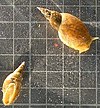















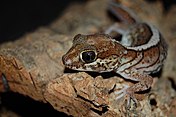


































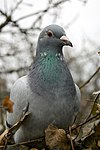































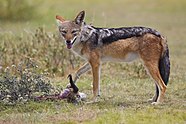

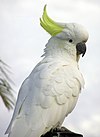


























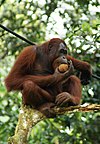















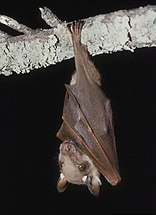












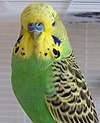











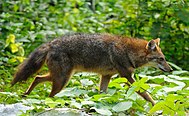


















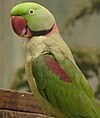
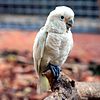






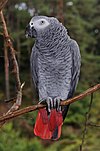
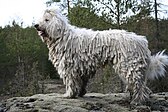
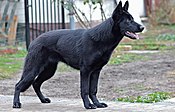































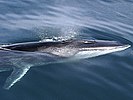

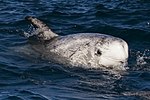



0 Response to "How Many Brain Cells Does a Baby Have"
Post a Comment